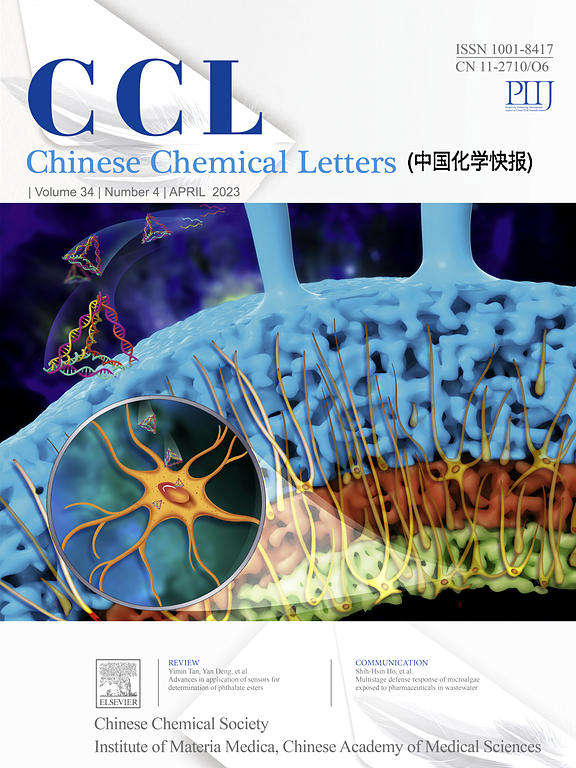设计层状氧化钴钠促进氯析出反应的层间钠密度
IF 8.9
1区 化学
Q1 CHEMISTRY, MULTIDISCIPLINARY
引用次数: 0
摘要
层状钴酸钠(NaxCoO2)具有CoO2板和层内共边CoO6八面体的特征,作为氯析出反应(CER)的电催化剂具有很大的潜力。然而,中间体在NaxCoO2上的不理想吸附导致活性不理想。本文设计了不同钠密度(x = 0.6,0.7,0.9)的NaxCoO2薄片,以获得高效的CER。令人兴奋的是,最优的Na0.7CoO2实现了超低过电位(55.47 mV),优于10 mA/cm2的商用RuO2,同时对竞争的OER保持无活性。实验和理论计算表明,适当的层间钠密度优化了NaxCoO2中Co原子的d波段中心能级,从而减弱了Co- cl键的强度。这种调制促进了Cl在表面的吸附-解吸平衡(∆GCl* = -0.109 eV),并加速了Cl2的释放。这项工作有望阐明层间钠密度改变NaxCoO2催化性能的机理,并为合理设计先进的CER电催化剂提供新的见解。本文章由计算机程序翻译,如有差异,请以英文原文为准。

Engineering the interlayer sodium density in layered sodium cobalt oxide for boosted chlorine evolution reaction
Layered sodium cobaltate (NaxCoO2), characterized by CoO2 slabs and intralayer edge-shared CoO6 octahedra, holds promising potential as an electrocatalyst for chlorine evolution reaction (CER). However, the suboptimal adsorption of the intermediate on NaxCoO2 resulted in unsatisfactory activity. Herein, NaxCoO2 flakes with varying sodium densities (x = 0.6, 0.7, 0.9) were engineered for efficient CER. Excitingly, the optimal Na0.7CoO2 achieves an ultralow overpotential (55.47 mV) outperforming commercial RuO2 at 10 mA/cm2, while remaining inactive toward the competing OER. Experimental and theoretical calculations demonstrate that appropriate interlayer sodium density has optimized the d-band center level of Co atoms in NaxCoO2, thereby weakening the strength of Co-Cl bonds. This modulation facilitates the adsorption-desorption equilibrium of Cl species (∆GCl* = -0.109 eV) on the surface and kinetically accelerating Cl2 release. This work is anticipated to elucidate the mechanism by which interlayer sodium density modifies the catalytic performance of NaxCoO2, and present new insights for the rational design of advanced CER electrocatalysts.
求助全文
通过发布文献求助,成功后即可免费获取论文全文。
去求助
来源期刊

Chinese Chemical Letters
化学-化学综合
CiteScore
14.10
自引率
15.40%
发文量
8969
审稿时长
1.6 months
期刊介绍:
Chinese Chemical Letters (CCL) (ISSN 1001-8417) was founded in July 1990. The journal publishes preliminary accounts in the whole field of chemistry, including inorganic chemistry, organic chemistry, analytical chemistry, physical chemistry, polymer chemistry, applied chemistry, etc.Chinese Chemical Letters does not accept articles previously published or scheduled to be published. To verify originality, your article may be checked by the originality detection service CrossCheck.
 求助内容:
求助内容: 应助结果提醒方式:
应助结果提醒方式:


